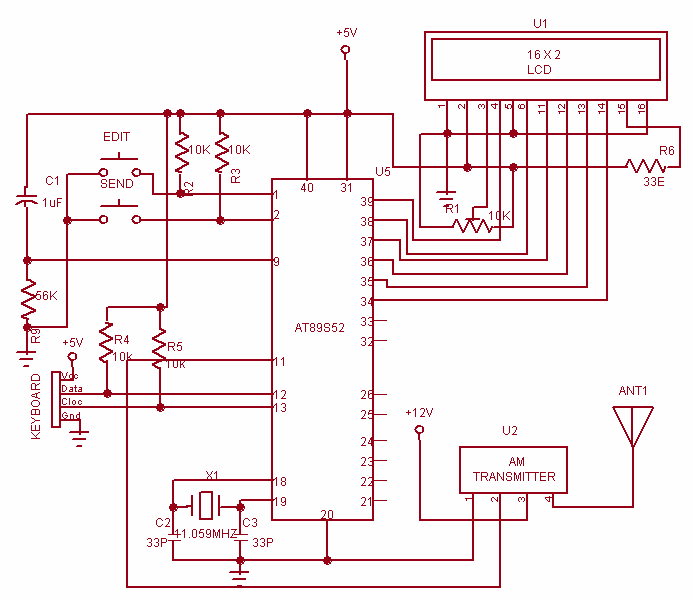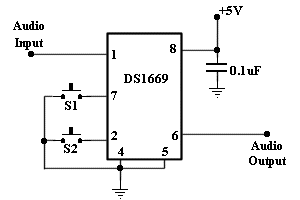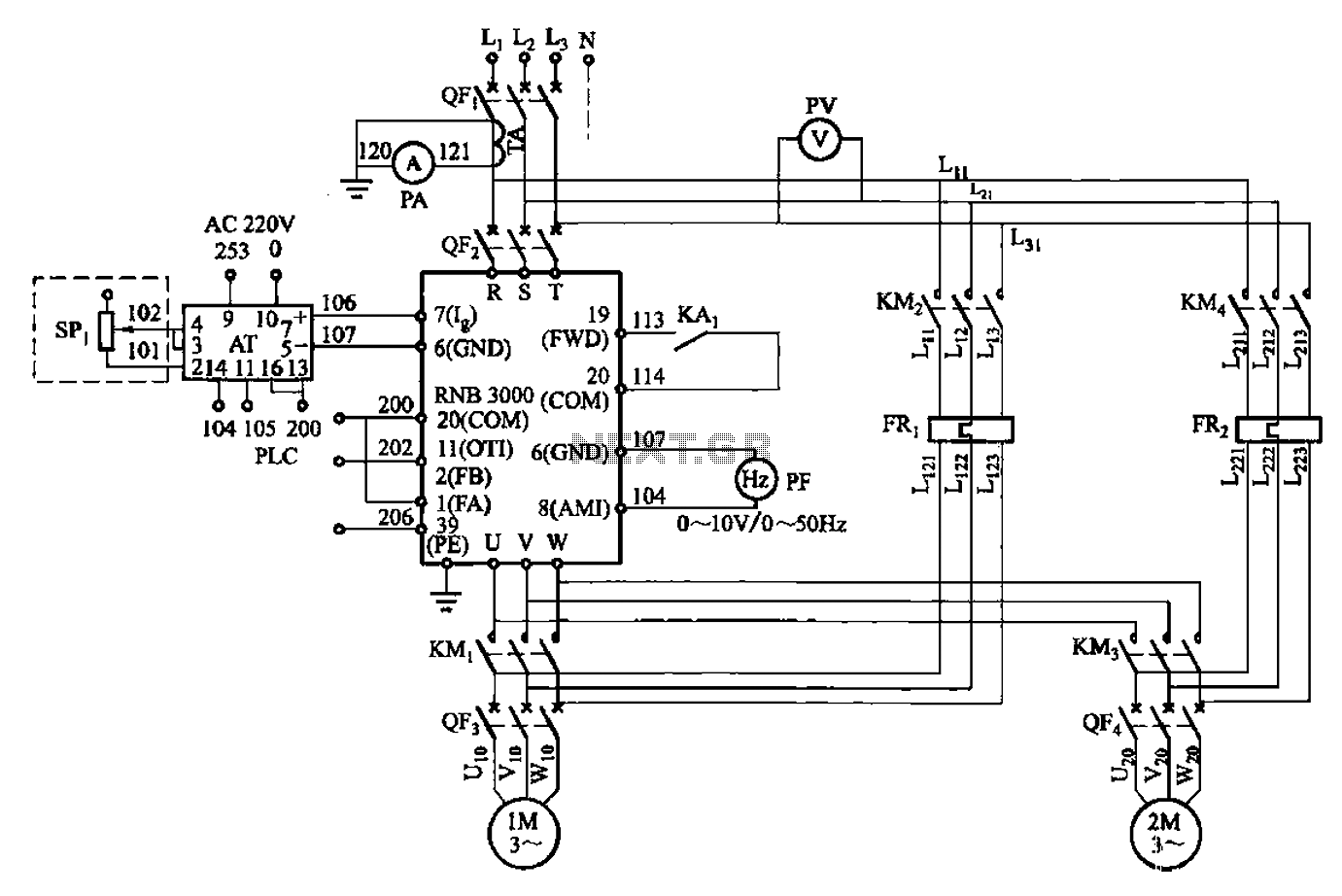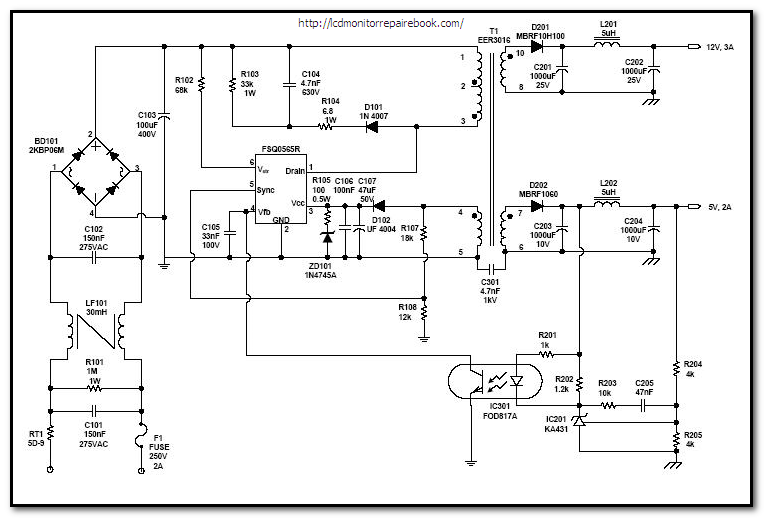
Cold Atom Control System for PC

We have developed a powerful yet inexpensive and easy to construct experiment control system. The construction of the system together with the control software is described here. All circuits and software are free to download and use for nonprofit. The system was developed for the BEC (Bose-Einstein condensation) experiments in the group of Mark Raizen at the University of Texas at Austin and is based on a system that one of the authors developed previously for experiments at the Ecole Normale Superieure in Paris. The hardware here includes a design for analog outputs (16-bit DACs) and digital outputs on a general purpose parallel bus which is easy to expand upon and interface with a variety of devices (i.e. DDS devices, microprocessors, etc). The hardware outputs are laboratory friendly with BNC-type outputs and line drive capacity. The software is intended for cold atom experiments and contains the code to talk with the hardware developed here. This system represents a simple to understand and cost effective method to control laboratory experiments. Here, we show an overview of the hardware implementation that we currently use. This setup involves an NI6533 card from National Instruments for allowing the computer to talk to the output hardware. The manual below suggests other (cheaper, cooler) methods to do this which we have not used since we already had the NI card. The experiment control system (15MB) (Rubidium experiment version) (Natrium experiment version (15MB)) (Clean version to start with (15MB)) for download here was devised for the Rubidium and Natrium Bose-Einstein condensation (BEC) experiments in the group of Mark Raizen, but can easily be adapted to many other cold atom experiments. It is a completely rewritten and improved version of the control programs used in the Lithium and Helium experiments of the ENS group in Paris. The design objective is to give the user a simple but very powerful programming interface to implement the sequence of a BEC type experiment. The program is written in Visual C++. The program communicates with a data acquisition computer, running the latest version of the data acquisition program "Vision", over TCP/IP. This second computer is responsible to acquire image data and treat and store them together with the experimental parameters. To use the control program it is not necessary to use Vision. Any other type of data acquisition program can be used, or for very simple experiments, Control itself can acquire the data. Read the manual to get more information about this program, which would certainly be very useful for any BEC experiment. Here you can look at some screenshots. The menus are automatically generated in dependence of the outputs, parameters and utilities that the user has defined and could look very different for you application. Main menu, Output list, Parameter Menu, Utility Menu, Measurement Menu (interactively created when using program), Measurement Menu (form to create new measurement), Measurement queue (interactively created). The control program can be used with many different types of input/output systems, not only our homegrown proposed here. It comes ready with support for NI6533 and NI6733 cards and it is not too difficult to support other types of output hardware. Vision2 (7 MB) is the latest version of the image acquisition, data treatment and management program that I wrote for the ENS Lithium project and the Raizen BEC experiments. It is easy to adapt to any camera system and well suited for many atom optics experiments, especially Bose-Einstein condensation experiments. Feel free to download, modify and use the code as you like as long as you notify me and don't sell the program or programs using my code. The working principle of Vision is the following. You should use one computer controlling the experiment and a second computer for image acquisition. The first computer controls the second by serial port (or TCP/IP). Absorption images are taken and stored together with the experimental parameters. The images are treated and adequate fits are performed. The results are stored in a Origin compatible ASCII file and displayed. Measurement series varying one or several parameters can be stored, added and displayed. Click on the above image to see an enlarged version of the Vision window. The code together with some sample data can be downloaded. Don't forget to read README.TXT in this package. You need Borland C++ 5.02 to modify the program. The program supports Princeton, Apogee and Andor cameras and it is not difficult to support additional cameras. It also supports communication with an independent camera computer via TCP/IP.
The described experiment control system is designed for conducting Bose-Einstein condensation (BEC) experiments, particularly focusing on Rubidium and Natrium atoms. The system architecture is modular, featuring a general-purpose parallel bus that facilitates easy expansion and integration with various devices, including Direct Digital Synthesis (DDS) devices and microprocessors. The analog output is managed through 16-bit Digital-to-Analog Converters (DACs), which ensure high precision in signal generation, essential for controlling experimental parameters accurately.
The hardware setup includes BNC-type outputs that are standard in laboratory environments, providing robust connectivity and line drive capacity, which is crucial for interfacing with other laboratory instruments. The control system utilizes the National Instruments NI6533 card, which serves as a bridge between the computer and the output hardware, enabling effective communication and control over the experimental setup. While the NI6533 card is recommended, alternative, cost-effective solutions are suggested in the accompanying manual, ensuring flexibility based on available resources.
The control software, developed in Visual C++, is tailored for cold atom experiments and is capable of communicating with a secondary data acquisition computer running the "Vision" program. This program is responsible for acquiring, processing, and storing image data alongside experimental parameters, thus allowing for comprehensive data management. The software interface is designed for user-friendliness, with menus dynamically generated based on user-defined outputs and parameters, thereby enhancing usability for varying experimental configurations.
The Vision program, which is integral to the data acquisition process, operates on a dual-computer setup where one computer controls the experiment and another handles image acquisition. This arrangement allows for simultaneous data collection and experimental control, optimizing the workflow in BEC experiments. The program supports various camera systems, including those from Princeton, Apogee, and Andor, with provisions for additional camera models as needed.
Overall, this experiment control system exemplifies a cost-effective, user-friendly solution for conducting sophisticated cold atom experiments, providing researchers with the necessary tools to explore the intricacies of Bose-Einstein condensation phenomena. The open-source nature of both the hardware designs and software code further promotes collaborative research and innovation within the scientific community.We have developed a powerful yet inexpensive and easy to construct experiment control system. The construction of the system together with the control software is described here. All circuits and software are free to download and use for nonprofit. The system was developed for the BEC (Bose-Einstein condensation) experiments in the group of Mark Raizen at the University of Texas at Austin and is based on a system that one of the authors developed previously for experiments at the Ecole Normale Superieure in Paris. The hardware here includes a design for analog outputs (16-bit DACs) and digital outputs on a general purpose parallel bus which is easy to expand upon and interface with a variety of devices (i.e.
DDS devices, microprocessors, etc). The hardware outputs are laboratory friendly with BNC-type outputs and line drive capacity. The software is intended for cold atom experiments and contains the code to talk with the hardware developed here. This system represents a simple to understand and cost effective method to control laboratory experiments.
Here, we show an overview of the hardware implementation that we currently use. This setup involves an NI6533 card from National Instruments for allowing the computer to talk to the output hardware. The manual below suggests other (cheaper, cooler) methods to do this which we have not used since we already had the NI card.
The experiment control system (15MB) (Rubidium experiment version) (Natrium experiment version (15MB)) (Clean version to start with (15MB)) for download here was devised for the Rubidium and Natrium Bose-Einstein condensation (BEC) experiments in the group of Mark Raizen, but can easily be adapted to many other cold atom experiments. It is a completely rewritten and improved version of the control programs used in the Lithium and Helium experiments of the ENS group in Paris.
The design objective is to give the user a simple but very powerful programming interface to implement the sequence of a BEC type experiment. The program is written in Visual C++. The program communicates with a data acquisition computer, running the latest version of the data acquisition program "Vision", over TCP/IP.
This second computer is responsible to acquire image data and treat and store them together with the experimental parameters. To use the control program it is not necessary to use Vision. Any other type of data acquisition program can be used, or for very simple experiments, Control itself can acquire the data.
Read the manual to get more information about this program, which would certainly be very useful for any BEC experiment. Here you can look at some screenshots. The menus are automatically generated in dependence of the outputs, parameters and utilities that the user has defined and could look very different for you application.
Main menu, Output list, Parameter Menu, Utility Menu, Measurement Menu (interactively created when using program), Measurement Menu (form to create new measurement), Measurement queue (interactively created). The control program can be used with many different types of input/output systems, not only our homegrown proposed here.
It comes ready with support for NI6533 and NI6733 cards and it is not too difficult to support other types of output hardware. Vision2 (7 MB) is the latest version of the image acquisition, data treatment and management program that I wrote for the ENS Lithium project and the Raizen BEC experiments.
It is easy to adapt to any camera system and well suited for many atom optics experiments, especially Bose-Einstein condensation experiments. Feel free to download, modify and use the code as you like as long as you notify me and don't sell the program or programs using my code.
The working principle of Vision is the following. You should use one computer controlling the experiment and a second computer for image acquisition. The first computer controls the second by serial port (or TCP/IP). Absorption images are taken and stored together with the experimental parameters. The images are treated and adequate fits are performed. The results are stored in a Origin compatible ASCII file and displayed. Measurement series varying one or several parameters can be stored, added and displayed. Click on the above image to see an enlarged version of the Vision window. The code together with some sample data can be downloaded. Don't forget to read README.TXT in this package. You need Borland C++ 5.02 to modify the program. The program supports Princeton, Apogee and Andor cameras and it is not difficult to support additional cameras. It also supports communication with an independent camera computer via TCP/IP. 🔗 External reference
The described experiment control system is designed for conducting Bose-Einstein condensation (BEC) experiments, particularly focusing on Rubidium and Natrium atoms. The system architecture is modular, featuring a general-purpose parallel bus that facilitates easy expansion and integration with various devices, including Direct Digital Synthesis (DDS) devices and microprocessors. The analog output is managed through 16-bit Digital-to-Analog Converters (DACs), which ensure high precision in signal generation, essential for controlling experimental parameters accurately.
The hardware setup includes BNC-type outputs that are standard in laboratory environments, providing robust connectivity and line drive capacity, which is crucial for interfacing with other laboratory instruments. The control system utilizes the National Instruments NI6533 card, which serves as a bridge between the computer and the output hardware, enabling effective communication and control over the experimental setup. While the NI6533 card is recommended, alternative, cost-effective solutions are suggested in the accompanying manual, ensuring flexibility based on available resources.
The control software, developed in Visual C++, is tailored for cold atom experiments and is capable of communicating with a secondary data acquisition computer running the "Vision" program. This program is responsible for acquiring, processing, and storing image data alongside experimental parameters, thus allowing for comprehensive data management. The software interface is designed for user-friendliness, with menus dynamically generated based on user-defined outputs and parameters, thereby enhancing usability for varying experimental configurations.
The Vision program, which is integral to the data acquisition process, operates on a dual-computer setup where one computer controls the experiment and another handles image acquisition. This arrangement allows for simultaneous data collection and experimental control, optimizing the workflow in BEC experiments. The program supports various camera systems, including those from Princeton, Apogee, and Andor, with provisions for additional camera models as needed.
Overall, this experiment control system exemplifies a cost-effective, user-friendly solution for conducting sophisticated cold atom experiments, providing researchers with the necessary tools to explore the intricacies of Bose-Einstein condensation phenomena. The open-source nature of both the hardware designs and software code further promotes collaborative research and innovation within the scientific community.We have developed a powerful yet inexpensive and easy to construct experiment control system. The construction of the system together with the control software is described here. All circuits and software are free to download and use for nonprofit. The system was developed for the BEC (Bose-Einstein condensation) experiments in the group of Mark Raizen at the University of Texas at Austin and is based on a system that one of the authors developed previously for experiments at the Ecole Normale Superieure in Paris. The hardware here includes a design for analog outputs (16-bit DACs) and digital outputs on a general purpose parallel bus which is easy to expand upon and interface with a variety of devices (i.e.
DDS devices, microprocessors, etc). The hardware outputs are laboratory friendly with BNC-type outputs and line drive capacity. The software is intended for cold atom experiments and contains the code to talk with the hardware developed here. This system represents a simple to understand and cost effective method to control laboratory experiments.
Here, we show an overview of the hardware implementation that we currently use. This setup involves an NI6533 card from National Instruments for allowing the computer to talk to the output hardware. The manual below suggests other (cheaper, cooler) methods to do this which we have not used since we already had the NI card.
The experiment control system (15MB) (Rubidium experiment version) (Natrium experiment version (15MB)) (Clean version to start with (15MB)) for download here was devised for the Rubidium and Natrium Bose-Einstein condensation (BEC) experiments in the group of Mark Raizen, but can easily be adapted to many other cold atom experiments. It is a completely rewritten and improved version of the control programs used in the Lithium and Helium experiments of the ENS group in Paris.
The design objective is to give the user a simple but very powerful programming interface to implement the sequence of a BEC type experiment. The program is written in Visual C++. The program communicates with a data acquisition computer, running the latest version of the data acquisition program "Vision", over TCP/IP.
This second computer is responsible to acquire image data and treat and store them together with the experimental parameters. To use the control program it is not necessary to use Vision. Any other type of data acquisition program can be used, or for very simple experiments, Control itself can acquire the data.
Read the manual to get more information about this program, which would certainly be very useful for any BEC experiment. Here you can look at some screenshots. The menus are automatically generated in dependence of the outputs, parameters and utilities that the user has defined and could look very different for you application.
Main menu, Output list, Parameter Menu, Utility Menu, Measurement Menu (interactively created when using program), Measurement Menu (form to create new measurement), Measurement queue (interactively created). The control program can be used with many different types of input/output systems, not only our homegrown proposed here.
It comes ready with support for NI6533 and NI6733 cards and it is not too difficult to support other types of output hardware. Vision2 (7 MB) is the latest version of the image acquisition, data treatment and management program that I wrote for the ENS Lithium project and the Raizen BEC experiments.
It is easy to adapt to any camera system and well suited for many atom optics experiments, especially Bose-Einstein condensation experiments. Feel free to download, modify and use the code as you like as long as you notify me and don't sell the program or programs using my code.
The working principle of Vision is the following. You should use one computer controlling the experiment and a second computer for image acquisition. The first computer controls the second by serial port (or TCP/IP). Absorption images are taken and stored together with the experimental parameters. The images are treated and adequate fits are performed. The results are stored in a Origin compatible ASCII file and displayed. Measurement series varying one or several parameters can be stored, added and displayed. Click on the above image to see an enlarged version of the Vision window. The code together with some sample data can be downloaded. Don't forget to read README.TXT in this package. You need Borland C++ 5.02 to modify the program. The program supports Princeton, Apogee and Andor cameras and it is not difficult to support additional cameras. It also supports communication with an independent camera computer via TCP/IP. 🔗 External reference





